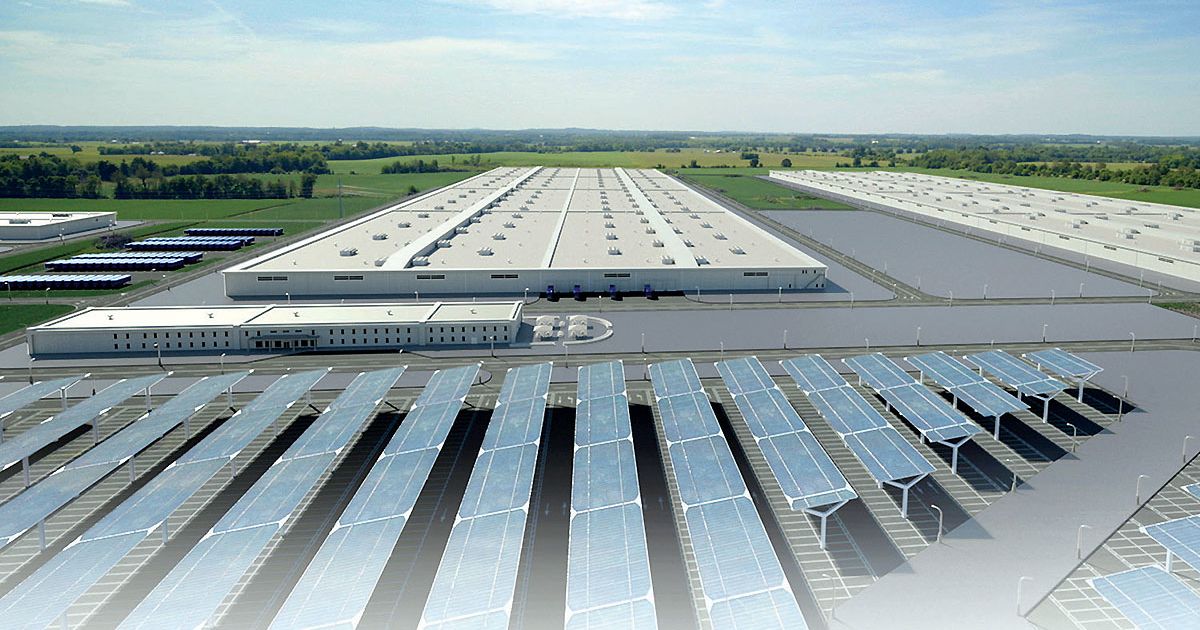
Last week’s announcement by Stellantis that it will open a $4.1 billion battery plant in Ontario is one more reminder of the new wave of investment coming to the industry. Automakers and battery companies are spending unprecedented sums of money as they begin creating North America’s EV supply chain.
In just the past year, automakers and their battery suppliers have committed $13.5 billion to create EV battery plants in North America.
That’s a colossal supply chain figure — but it doesn’t fully capture the scale of recent investment.
Not included are other projects for which manufacturers have not clarified how much of their investments are earmarked for new battery plants and how much will go toward the vehicle production lines that will need the batteries.
For Ford Motor Co.’s Blue Oval City project in Tennessee, Ford and SK Innovation plan to spend a combined $5.6 billion on an EV battery plant and a new vehicle assembly plant, but they have not separated how much will go where.
Similarly, Volkswagen said last week it will spend $7.1 billion on EV development in North America, including potential battery production. But it has not specified how much of that amount will go toward erecting the expensive new battery factories that go hand in hand with EV assembly lines.
The $13.5 billion tally also does not include projects that have been reported, or even confirmed, by global battery producers but have not yet been finalized.
Those include a possible project from Contemporary Amperex Technology Co. of China to select a North American site for a new $5 billion battery plant. Tesla battery supplier Panasonic is also scouting for a new North American site, and so is Envision AESC of Japan, which intends to build a plant to supply Mercedes-Benz EV production in Alabama.
The enormous scale of new investment is unprecedented in automotive history, said Evan Horetsky, a partner at McKinsey and Co. and a former Tesla Inc. executive.
“We’re trying to find a historical match. Basically, this is Industrial Revolution scale,” Horetsky said. “And we’re seeing that we’re only at the starting point of this scaling journey.”
McKinsey anticipates battery-cell manufacturing capacity to grow by 45 to 50 percent in the U.S. each year between now and 2025. That is a recalculation of the firm’s forecast from just a few weeks ago, when it anticipated capacity to rise by about 40 percent each year. The revision demonstrates how quickly investments are ramping up in North America, Horetsky said.sky said.
But is the industry over-responding to the allure of a new opportunity?
Observers don’t think so.
In fact, if the industry hopes to manufacture enough batteries to support the aggressive EV sales targets set by automakers and governments, the eruption of investments might be merely scratching the surface. The U.S. government, for instance, has set a target of having half of all U.S. new-vehicle sales be electric by 2030. That target alone would require a supply of some 8 million new EV batteries a year.
McKinsey expects global demand for lithium ion batteries to grow to about 3,500 gigawatt-hours by 2030, a dramatic increase from the 2019 capacity of about 220 GWh. Horetsky said that will require the opening of 200 or more new battery factories around the world in the coming years, including many in North America to support EV production here.
“A lot of that capacity has been announced now, but we’re still seeing that there are more projections of demand than supply, especially as we head toward 2030 and more of these regulations kick in,” Horet
This month alone saw billions of dollars worth of EV battery plant plans announced.
Stellantis said last week that it and LG Energy Solution will spend $4.1 billion to open a large-scale battery plant in Windsor, Ontario, by 2024. It will have capacity to produce 45 GWh of lithium ion battery cells, the automaker said.
Stellantis CEO Carlos Tavares said in a statement that the plant “is yet another steppingstone to achieving our aggressive electrification road map in the region aimed at hitting 50 percent of battery-electric vehicle sales in the U.S. and Canada by the end of the decade.”
The announcement closely followed Mercedes’ announcement this month that Envision AESC will supply it with battery cells from a new U.S. plant by mid-decade. That project will support Mercedes’ newly opened battery-pack plant near Vance, Ala.